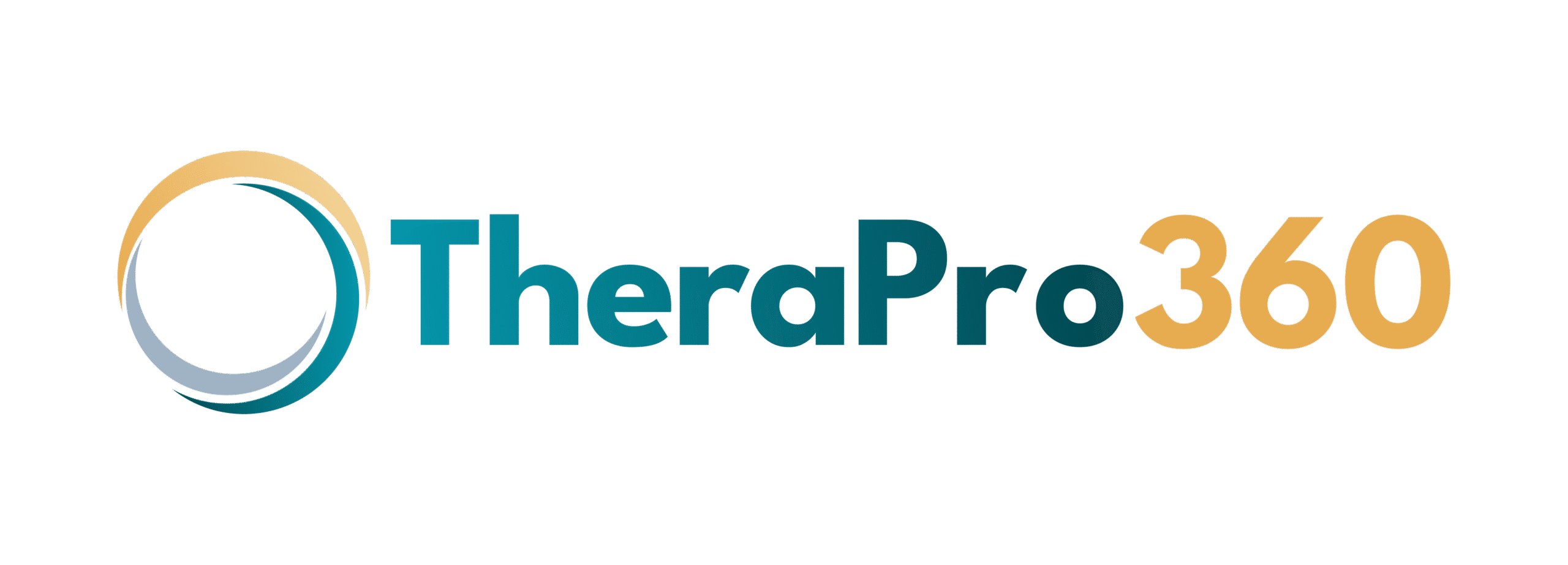
Blog
How Custom Intake Forms Simplify Patient Onboarding
Expert web designers ensure the site and software is easy to use.How Custom Intake Forms Simplify Patient Onboarding
The patient onboarding process is your practice’s first handshake. It’s the first tangible experience a new family has with your clinical and administrative operations. A clunky, confusing, and paper-heavy intake process can create frustration and signal disorganization before the first therapy session even begins. Conversely, a smooth, modern, and efficient onboarding experience sets a positive tone, builds immediate trust, and paves the way for a successful therapeutic relationship.
Many practices still rely on thick packets of paper forms that clients have to fill out in the waiting room, leading to delays, illegible information, and hours of manual data entry for your staff. This outdated workflow is a major source of administrative friction and a poor first impression. The solution lies in digitizing and automating this critical first step.
This guide will explore how custom digital intake forms, a key feature of modern practice management software for speech therapists, can revolutionize your patient onboarding. We’ll cover the challenges of manual processes, the benefits of digital workflows, and the steps you can take to create a seamless, secure, and personalized intake experience for every new client.
Why Patient Onboarding Matters in Speech Therapy
The intake process is far more than just a bureaucratic necessity. It’s a foundational part of the client journey that has a lasting impact on engagement, satisfaction, and even clinical outcomes.
The importance of first impressions in client care
From the moment a potential client contacts your practice, they are forming an impression. A professional, organized, and convenient onboarding process demonstrates that your practice is modern and client-centered. It communicates competence and respect for the client’s time. A frustrating first impression, on the other hand, can create doubt and anxiety, making it harder to build the rapport and trust that are so essential for effective therapy.
How a smooth intake process sets the tone for therapy success
When a family can easily provide their information from the comfort of their home, receive clear communication about their first appointment, and arrive prepared and on time, they begin their journey with a sense of confidence and calm. This positive start allows the therapist to focus the first session entirely on building rapport and beginning the clinical assessment, rather than dealing with last-minute paperwork and administrative issues. A smooth intake process sets the stage for a collaborative and successful partnership.
Common pain points in traditional onboarding workflows
The traditional paper-based intake process is fraught with challenges for both clients and staff.
- For Clients: Feeling rushed to complete lengthy forms in the waiting room, forgetting important information (like insurance details), and having to fill out redundant information on multiple pages.
- For Staff: Deciphering illegible handwriting, manually typing all the data into the system, chasing down incomplete forms, and managing the physical storage of sensitive documents.
These pain points create a stressful and inefficient experience for everyone involved.
What Are Speech Therapy Intake Forms?
Intake forms are the primary tool for gathering all the necessary information about a new client before therapy begins. They are a critical component of both the clinical and administrative sides of your practice.
Overview of intake forms and their role in clinical practice
Intake forms serve to collect a comprehensive history of the client. This information allows the therapist to prepare for the initial evaluation, understand the presenting concerns, and begin to formulate a diagnostic and treatment plan. Administratively, these forms provide the demographic and insurance information needed to create a patient account, verify benefits, and bill for services.
What information should be collected from new patients
A thorough speech therapy intake packet should gather several types of information.
Checklist: Essential Intake Form Information
- [✓] Demographic Information: Patient’s name, date of birth, address, contact information.
- [✓] Parent/Guardian Information: Names, contact details, and relationship to the patient.
- [✓] Insurance Details: Insurance provider, policy number, group number, and subscriber information.
- [✓] Reason for Seeking Services: The primary concerns that led them to your practice.
- [✓] Developmental History: Milestones for speech, motor, and social development.
- [✓] Medical History: Any relevant diagnoses, past surgeries, medications, and other providers involved.
- [✓] Social and Academic History: Information about school, social interactions, and home environment.
- [✓] Consent Forms: Consent for treatment, privacy policy (HIPAA) acknowledgment, financial policy agreement, and consent for release of information.
Paper vs. digital forms — which is better for modern practices?
While paper forms have been the standard for decades, they are no longer the best option. Digital forms are superior in almost every way for a modern practice.
- Paper Forms: Prone to errors, require manual data entry, are difficult to secure and store, and are inconvenient for clients.
- Digital Forms: Can be completed online at the client’s convenience, integrate directly with your EMR, improve accuracy through data validation, and are far more secure.
For practices looking to be more efficient, professional, and compliant, the choice is clear: digital is the way to go.
Challenges of Manual Patient Onboarding
Relying on a manual, paper-based onboarding process creates a cascade of challenges that drain your practice’s time, money, and resources.
Time-consuming paperwork and data entry errors
The most obvious challenge is the sheer amount of time it takes. First, the client spends 15-20 minutes filling out the forms in your office. Then, your administrative staff spends another 15-20 minutes manually transcribing that information into your practice management system. This is a significant amount of non-billable time. Furthermore, this manual data entry is a major source of errors. A typo in an insurance ID number or a birthdate can lead to claim denials and payment delays.
Delays in insurance verification and documentation
Because paper forms are typically completed just before the first appointment, your staff has no time to verify insurance eligibility and benefits in advance. This means you may not know the client’s company or if services are even covered until after the session has already occurred. This creates financial uncertainty and can lead to awkward billing conversations with the client later.
Poor communication between administrative staff and therapists
In a manual system, the therapist often doesn’t get to see the intake information until minutes before they walk into the session. They have no time to review the client’s history, prepare relevant materials, or mentally formulate a plan. This lack of preparation can make the first session feel rushed and less focused.
Security concerns with physical storage and file sharing
Paper records present a significant security risk. They can be lost, misfiled, or viewed by unauthorized individuals. Storing years of patient records requires a large, secure, and locked physical space. If you need to share a record with another provider, you are left with the insecure options of faxing or mailing, which are slow and outdated.
How Custom Digital Intake Forms Improve Efficiency
Switching to a digital intake process within your practice management software can eliminate these challenges and dramatically improve your practice’s efficiency.
Automating patient data collection and updates
With digital intake forms, the workflow is automated. When a new patient schedules an appointment, the system automatically sends them an email or text with a link to your secure online forms. The client fills out the information on their own time, from any device. Once they submit the form, the data is automatically and instantly populated into their new chart in your EMR. There is zero manual data entry for your staff.
Reducing wait times and manual input for staff
Because clients complete their paperwork before they ever set foot in your office, they can be seen on time for their appointment. This eliminates waiting room backups and keeps your schedule running smoothly. For your staff, it eliminates hours of tedious data entry each week, freeing them up to focus on higher-value tasks like patient communication, benefits verification, and scheduling.
Integrating forms directly with patient records and schedules
The real power of digital forms comes from integration. The data from the form doesn’t just sit in a file; it becomes part of the client’s active record.
- The demographic data populates the client’s chart.
- The insurance data flows to the billing module.
- The completed form is attached to the client’s record as a permanent PDF.
- The appointment on the schedule is flagged to show that the intake forms are complete.
Enabling clients to complete forms online before appointments
This is a massive convenience for clients. They can take their time to fill out the forms accurately, referencing insurance cards and other documents without feeling rushed. It allows them to complete the process when it’s best for them—in the evening after work, during a lunch break, or on a weekend. This client-centered approach creates a much better first impression.
Personalizing the Patient Experience Through Custom Forms
Not all intake needs are the same. A one-size-fits-all form may not be appropriate for every client. Custom digital forms allow you to tailor the intake process to the specific needs of your clients and your practice.
Tailoring questions for age, therapy goals, or diagnosis
With a flexible digital form builder, you can create different versions of your intake packet.
- Pediatric Form: Includes detailed questions about developmental milestones, pregnancy and birth history, and caregiver concerns.
- Adult Form: Focuses more on educational and vocational history, previous therapy experiences, and personal goals for therapy.
- Voice Client Form: Contains specific questions about vocal use, lifestyle factors, and medical history related to voice.
This ensures you are asking the most relevant questions for each client population.
Adding dynamic fields for personalized care plans
Advanced digital forms can use conditional logic. This means the form can show or hide certain questions based on previous answers. For example, if a parent indicates their child has been diagnosed with Autism Spectrum Disorder, a new section of questions specifically related to ASD can automatically appear. This creates a dynamic, personalized experience and ensures you gather the most pertinent information.
Improving client engagement with user-friendly form design
A well-designed digital form is easy to navigate, with clear instructions, logical sections, and progress indicators. This user-friendly experience makes the process feel less like a chore and more like a collaborative first step in the therapy process. A positive form-filling experience can increase a client’s initial engagement and positive perception of your practice.
How customization helps therapists prepare for first sessions
When a therapist receives a completed, customized intake form in advance, they can walk into the first session fully prepared. They already have a deep understanding of the client’s history and concerns. This allows them to tailor their initial assessment, build rapport more quickly, and make the first session far more productive and impactful.
Enhancing Accuracy and Compliance with Digital Forms
Digital forms are not just more efficient; they are also more accurate and secure, which is critical for both clinical quality and HIPAA compliance.
Built-in validation to prevent incomplete submissions
One of the most common problems with paper forms is missing information. Digital forms can solve this with data validation. You can make certain fields “required,” which prevents the client from submitting the form until all critical information (like a birthdate or insurance ID) has been entered. This ensures you receive complete and accurate data every time.
Automatic data encryption and secure storage
When a client submits a digital form through a HIPAA-compliant platform, the data is encrypted both in transit and at rest. This means it is scrambled and unreadable to any unauthorized party. The completed forms are stored securely in your cloud-based EMR, protected by enterprise-grade security measures that are far superior to a physical file room.
HIPAA-compliant form handling and electronic signatures
A compliant digital forms solution allows for secure electronic signatures on consent forms. This creates a legally valid, time-stamped record of the client’s consent without ever needing to print a piece of paper. The entire process, from form completion to signature, is handled within a secure, auditable environment.
Real-time updates to patient records for better coordination
As soon as a client clicks “submit,” their information is live in your practice management system. Your administrative team can immediately begin verifying benefits, and the therapist can review the clinical history. This real-time update eliminates information silos and ensures your entire team is working with the most current data, improving coordination from the very beginning.
How Practice Management Software Simplifies Onboarding
An integrated software platform is the engine that drives a modern, automated onboarding process. It connects all the dots to create a truly seamless experience.
Centralizing scheduling, forms, and communication
Instead of using separate tools, an all-in-one system brings everything together. The client schedules their first appointment, the system automatically sends the digital intake forms, and all communication happens through the secure patient portal. This centralized approach keeps everything organized and provides a single, professional point of contact for the new client.
Automatically linking intake data to billing and documentation
This is the core of integration. The information a client enters once on an intake form becomes the foundational data for their entire record.
- Their name and date of birth flow into every future progress note.
- Their insurance information is used to create every future claim.
- Their contact information is used for every automated appointment reminder.
This automated linking saves countless hours and prevents the errors that come from re-typing data.
Reducing administrative workload through automation
The entire onboarding workflow can be automated. From sending the initial forms to sending reminders to complete them, the software handles the repetitive tasks. This frees up your administrative staff from being “paper-pushers” and allows them to become true client experience managers, focusing on building relationships and solving problems.
Creating a seamless experience from first contact to first session
With an integrated system, the client journey is smooth and logical. They find your practice online, request an appointment through your website, receive a link to your online forms, complete them at home, and arrive at their first session fully prepared. This seamless, professional experience builds confidence and sets the stage for a successful long-term relationship.
How TheraPro360 Streamlines Intake and Onboarding
Choosing a platform with a powerful and flexible forms builder is key. A system like TheraPro360 is designed to provide speech therapists with the tools they need to perfect their onboarding process.
Customizable digital intake forms built for speech therapists
TheraPro360 allows you to create fully custom digital intake packets. You can build different forms for different service types, add your practice’s branding and logo, and include a wide range of field types, including text boxes, drop-down menus, and electronic signature fields.
Secure, HIPAA-compliant data collection and storage
With TheraPro360, the entire process is HIPAA-compliant. Clients submit their sensitive information through a secure, encrypted portal. The data is then stored in the centralized, secure EMR, ensuring you are meeting your compliance obligations from day one.
Integration with scheduling, billing, and progress tracking
The forms in TheraPro360 are deeply integrated with the rest of the platform. Submitted data automatically populates the client’s chart, ready to be used by the scheduling, billing, and clinical documentation modules. This end-to-end integration is what makes the workflow so efficient.
Automated reminders and follow-ups for new patients
The system can be configured to automatically send reminders to new clients who have not yet completed their intake forms, saving your staff from having to make manual follow-up calls.
Learn more about TheraPro360’s intake and onboarding features
By providing a powerful, customizable, and fully integrated forms solution, TheraPro360 helps you make a great first impression and streamline your practice from the very first interaction. To see how these tools can transform your workflow, (insert internal link to product or features page).
The ROI of Digital Intake Forms for Speech Therapy Practices
The investment in a system with custom digital forms pays for itself many times over through measurable gains in efficiency and client satisfaction.
Saving staff hours through automation
Calculate the time your administrative staff currently spends printing, assembling, scanning, and manually entering data from paper forms. Automating this process can easily save 5-10 hours of staff time per week, which translates into thousands of dollars in labor cost savings per year.
Fewer data entry errors and faster client onboarding
By eliminating manual data entry, you drastically reduce the number of costly errors, such as incorrect insurance IDs, that lead to claim denials. This, combined with the ability to verify benefits in advance, leads to a faster, cleaner revenue cycle.
Improved client satisfaction and retention rates
A convenient, modern, and professional onboarding process leads to higher client satisfaction from the very beginning. Happy clients are more likely to stay with your practice long-term, increasing your retention rate and the lifetime value of each client.
How automation increases practice productivity overall
When your onboarding is automated and efficient, your entire practice runs more smoothly. Schedules stay on time, therapists are better prepared, and administrative staff have more time for high-value tasks. This overall increase in productivity allows your practice to grow and see more clients without a proportional increase in administrative overhead.
Tips for Implementing Custom Intake Forms in Your Practice
A successful rollout requires thoughtful planning and a focus on user experience.
Identify key data points and workflow needs
Before you build your forms, map out exactly what information you need to collect and how you want the workflow to function. Involve both your clinical and administrative teams in this process to ensure the forms meet everyone’s needs.
Choose a software that integrates forms with patient records
The most important factor is integration. Choose a practice management software for speech therapists where the digital forms are a native feature, not a third-party add-on. This ensures seamless data flow and a unified experience.
Test usability with both clients and staff
Before you go live, have a few “test clients” (or friends and family) and your staff members go through the entire process. Collect their feedback on the clarity of the questions, the ease of use, and the overall workflow. Use this feedback to make improvements.
Continuously optimize based on feedback and data
Your intake process should be a living system. Periodically review your forms. Are there questions that are consistently confusing for clients? Is there information you need that you aren’t currently collecting? Don’t be afraid to make adjustments to continually optimize the process.
Conclusion: Simplify Onboarding and Focus on Patient Care
The patient onboarding process is too important to be left to inefficient, outdated paper-based systems. It’s your first and best opportunity to show clients that your practice is professional, modern, and dedicated to providing a superior experience.
Why digital intake forms are essential for modern SLP practices
Custom digital intake forms are an essential tool for any practice that wants to be more efficient, accurate, and client-centered. They save time, reduce errors, enhance security, and create a powerful first impression that sets the stage for a successful therapeutic relationship.
How automation supports accuracy, efficiency, and compliance
By automating the collection and processing of new patient information, you build a system that is inherently more accurate, efficient, and compliant. You remove the risks of human error and create a streamlined workflow that benefits your staff and your clients.
Get started with TheraPro360’s all-in-one practice management solution
The journey to a seamless onboarding experience begins with choosing the right platform. An all-in-one solution provides the integrated tools you need to transform your intake process and your entire practice. (final internal CTA link).
FAQs About Speech Therapy Intake Forms
What should be included in a speech therapy intake form?
A comprehensive intake packet should include patient demographics, insurance information, reason for referral, developmental and medical history, consent forms (for treatment, HIPAA, financial policies), and any specific questionnaires related to the client’s age or presenting concern.
Are digital intake forms HIPAA-compliant?
Yes, as long as they are part of a HIPAA-compliant software platform. The platform must use encryption to protect the data, require secure logins, and the vendor must sign a Business Associate Agreement (BAA). You cannot use standard, non-secure online form builders (like Google Forms) for collecting PHI.
How do custom forms integrate with practice management software?
In a fully integrated system, the data a client enters into a digital form automatically populates the corresponding fields in their electronic patient chart. This means there is no manual data entry required. The completed form is also saved as a document in their file for future reference.
Can patients fill out forms remotely before their appointment?
Yes, this is one of the biggest benefits. A modern practice management system will automatically email or text a new patient a secure link to the online forms after they schedule their first appointment. They can then complete the paperwork from their computer, tablet, or smartphone at their convenience.
Why TheraPro360?
Run your practice with simplicity with our streamlined scheduling, seamless telehealth integration, centralized patient portals, intuitive calendar management, and automated invoicing.
Get Started Today















